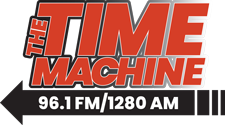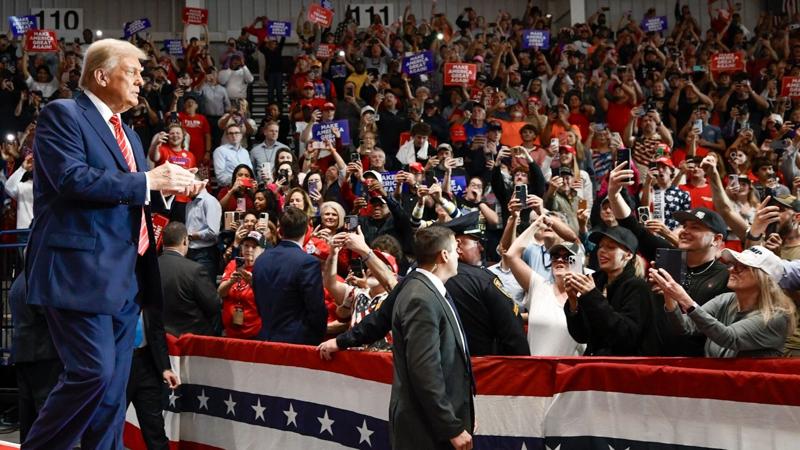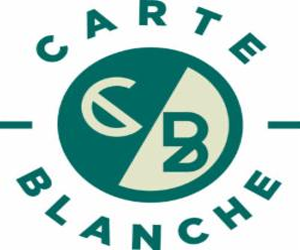Former President Donald Trump’s plan to raise tariffs to offset part of the cost of his proposed tax policies adds a “chaos” factor to the U.S. presidential election, analysts say.
With voters focused on issues such as high prices, the economy, and illegal immigration, Trump’s tariff plans have left economists on both sides of the political spectrum confounded.
The Cato Institute’s Vice President of General Economics Scott Lincicome has called Trump’s tariff plan “economically ignorant, geopolitically dangerous and politically misguided.”
Ed Gresser, vice president and director for trade and global markets at the Progressive Policy Institute, said Trump’s tariff proposals would mean “higher inflation, lower growth, more taxation of working families and less of investors.” Gresser noted that depending on how the proposal could be implemented, it could lead to a “constitutional crisis verging on taxation without representation.”
Tariffs are taxes imposed on goods imported from another country and the U.S. has long used them for multiple reasons. Tariffs were the nation’s primary source of revenue before lawmakers introduced income taxes in 1913 with the 16th Amendment, which established Congress’ right to impose a federal income tax.
Trump has proposed imposing a 10% to 20% across-the-board tariff on all imports and tariffs and up to 60% on goods from China. Trump’s tariff plans haven’t been detailed, confusing budget projections.
During a heated exchange with Bloomberg News Editor-in-Chief John Micklethwait last month in Chicago, Trump said the economists critical of his plan are wrong. Micklethwait said 10% to 20% tariffs will have a “serious” effect on the overall economy. Micklethwait expressed concern about high tariffs subsequently adding costs on the consumer, The Center Square reported.
“I agree it’s going to have a massive effect. A positive effect. It must be hard for you to spend 25 years talking about tariffs as being negative and then have somebody explain to you that you’re wrong. If you don’t do this [tariffs], this country has no chance,” Trump said.
Trump also said that tariffs can be used as a negotiating tactic to bring jobs that were shipped overseas back into the U.S.
“There’s two ways of looking at a tariff, you can do it as a money-making instrument or you can do it as something to get the companies to come in. If you want the companies to come in, the tariff has to be a lot higher than 10% because 10% is not enough. They’re not going to do it for 10%, but if you make a 50% tariff, they’re going to come in,” the former president said.
Experts have found it difficult to gauge how other countries would respond to those tariffs.
Credit-rating agency Moody’s called the plan “highly uncertain.”
“While such measures could raise several trillion dollars in revenue over the next decade, they could also lead to revenue losses from potential retaliatory actions from other countries and other economic losses,” Moody’s noted in a recent report. “Therefore, the net effect on future revenues and fiscal deficits from such measures is highly uncertain.”
Steven Durlauf, a professor at the University of Chicago Harris School of Public Policy, called it the “chaos” category in the upcoming election. Generally, economists are convinced tariffs wouldn’t bring consumer prices down, he said.
“On the tariff policies, the consensus forecast – and these are by nonpartisan people – is prices would go up [and] Gross Domestic Product would shrink,” Durlauf told The Center Square.
Gross Domestic Product is a measure of economic activity.
Durlauf said tariffs could create jobs with a shift to U.S. production, but would be “very hard to quantify.”
“It’s very hard pressed to make a serious argument that it wouldn’t have general, deleterious effects,” he said.
Durlauf noted that the president “does have substantial authority over tariffs,” no matter which party controls Congress.
“It was widely indicated that tariffs would be universally used as a negotiation tool, in line with previous tactics by the Trump administration, to grant tariff exemptions on concessional terms,” according to the report from Moody’s. “However, an initial blanket or tariff-matching approach, as well as uncertainty around tariff implementation and the outcome of trade negotiations would affect the real economy.”
No matter who voters elect to be the next president, the U.S. federal debt is expected to continue to grow. The Committee for A Responsible Federal Budget, a nonprofit group, estimates that both Harris’ plan and Trump’s plan would increase the debt. The group estimated that Trump’s plan would cost more than double Harris’ plan. It also noted areas of uncertainty in both candidates’ plans. Harris’ plan would increase the debt by $3.50 trillion through 2035, while Trump’s plan would increase the debt by $7.50 trillion, according to the Committee for A Responsible Federal Budget’s analysis.
Durlauf said the growing debt, and the interest costs to service that debt, could crowd out other spending priorities.
“In other words, if you want the government to do stuff, you can’t run infinite deficits,” he said.
The Congressional Budget Office projects that interest payments will hit $892 billion in fiscal year 2024. Interest costs are expected to grow from $1 trillion in 2025 to $1.7 trillion in 2034. In total, net interest payments will total $12.9 trillion over the next decade, according to the Peter G. Peterson Foundation.






